Decidual leukocytes respond to African lineage Zika virus infection with mild anti-inflammatory changes during acute infection in rhesus macaques
- PMID: 38515747
- PMCID: PMC10954895
- DOI: 10.3389/fimmu.2024.1363169
Decidual leukocytes respond to African lineage Zika virus infection with mild anti-inflammatory changes during acute infection in rhesus macaques
Abstract
Zika virus (ZIKV) can be vertically transmitted during pregnancy resulting in a range of adverse pregnancy outcomes. The decidua is commonly found to be infected by ZIKV, yet the acute immune response to infection remains understudied in vivo. We hypothesized that in vivo African-lineage ZIKV infection induces a pro-inflammatory response in the decidua. To test this hypothesis, we evaluated the decidua in pregnant rhesus macaques within the first two weeks following infection with an African-lineage ZIKV and compared our findings to gestationally aged-matched controls. Decidual leukocytes were phenotypically evaluated using spectral flow cytometry, and cytokines and chemokines were measured in tissue homogenates from the decidua, placenta, and fetal membranes. The results of this study did not support our hypothesis. Although ZIKV RNA was detected in the decidual tissue samples from all ZIKV infected dams, phenotypic changes in decidual leukocytes and differences in cytokine profiles suggest that the decidua undergoes mild anti-inflammatory changes in response to that infection. Our findings emphasize the immunological state of the gravid uterus as a relatively immune privileged site that prioritizes tolerance of the fetus over mounting a pro-inflammatory response to clear infection.
Keywords: Zika virus; decidua; immunome; inflammation; pregnancy; rhesus macaque.
Copyright © 2024 Koenig, Vazquez, Leyva Jaimes, Mitzey, Stanic and Golos.
Conflict of interest statement
The authors declare that the research was conducted in the absence of any commercial or financial relationships that could be construed as a potential conflict of interest.
Figures
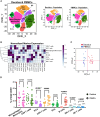
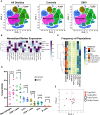
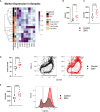


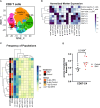
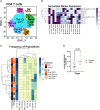
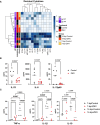
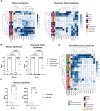
Comment on
-
Vertical transmission of African-lineage Zika virus through the fetal membranes in a rhesus macaque (Macaca mulatta) model.PLoS Pathog. 2023 Aug 7;19(8):e1011274. doi: 10.1371/journal.ppat.1011274. eCollection 2023 Aug. PLoS Pathog. 2023. PMID: 37549143 Free PMC article.
References
-
- CDC . CDC concludes Zika causes microcephaly and other birth defects. CDC Newsroom; (2016). Available at: https://www.cdc.gov/media/releases/2016/s0413-zika-microcephaly.html.
Publication types
MeSH terms
Grants and funding
LinkOut - more resources
Full Text Sources
Medical

